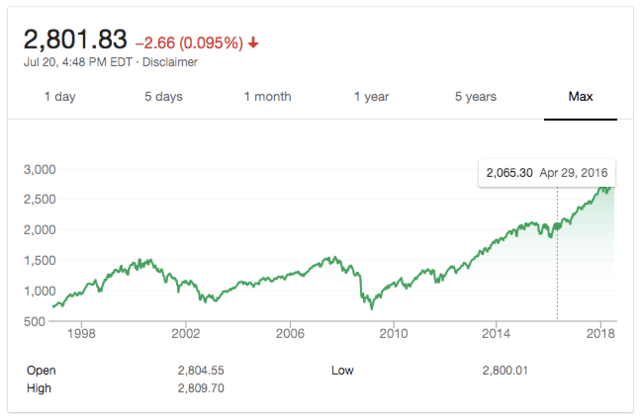3.landscape of the finance industry
- Central Banks
A central bank is the financial institution responsible for the oversight and management of all other banks. In the United States, the central bank is the Federal Reserve Bank, which is responsible for conducting monetary policy and supervision and regulation of financial institutions. Individual consumers do not have direct contact with a central bank; instead, large financial institutions work directly with the Federal Reserve Bank to provide products and services to the general public.
- Retail and Commercial Banks
Traditionally, retail banks offered products to individual consumers while commercial banks worked directly with businesses. Currently, the majority of large banks offer deposit accounts, lending and limited financial advice to both demographics. Products offered at retail and commercial banks include checking and savings accounts, certificates of deposit (CDs), personal and mortgage loans, credit cards, and business banking accounts.
- Internet Banks
A newer entrant to the financial institution market is the internet bank, which works similarly to a retail bank. Internet banks offer the same products and services as conventional banks, but they do so through online platforms instead of brick and mortar locations. (For related reading, see: The Pros and Cons of Internet Banks.)
- Credit Unions
Credit unions serve a specific demographic per their field of membership, such as teachers or members of the military. While products offered resemble retail bank offerings, credit unions are owned by their members and operate for their benefit.
- Savings and Loan Associations
Financial institutions that are mutually held and provide no more than 20% of total lending to businesses fall under the category of savings and loan associations. Individual consumers use savings and loan associations for deposit accounts, personal loans and mortgage lending.
- Investment Banks and Companies
Investment banks do not take deposits; instead, they help individuals, businesses and governments raise capital through the issuance of securities. Investment companies, more commonly known as mutual fund companies, pool funds from individual and institutional investors to provide them access to the broader securities market.
- Brokerage Firms
A brokerage firm assists individuals and institutions in buying and selling securities among available investors. Customers of brokerage firms can place trades of stocks, bonds, mutual funds, exchange-traded funds (ETFs) and some alternative investments.
- Insurance Companies
Financial institutions that help individuals transfer risk of loss are known as insurance companies. Individuals and businesses use insurance companies to protect against financial loss due to death, disability, accidents, property damage and other misfortunes.
- Mortgage Companies
Financial institutions that originate or fund mortgage loans are mortgage companies. While most mortgage companies serve the individual consumer market, some specialize in lending options for commercial real estate only.

reference:
https://www.foxweek.com/articles/challenges-financial-industry
https://www.investopedia.com/ask/answers/061615/what-are-major-categories-financial-institutions-and-what-are-their-primary-roles.asp
https://twocents.lifehacker.com/the-many-different-types-of-investments-and-how-they-w-1683582510
- Central Banks
A central bank is the financial institution responsible for the oversight and management of all other banks. In the United States, the central bank is the Federal Reserve Bank, which is responsible for conducting monetary policy and supervision and regulation of financial institutions. Individual consumers do not have direct contact with a central bank; instead, large financial institutions work directly with the Federal Reserve Bank to provide products and services to the general public.
- Retail and Commercial Banks
Traditionally, retail banks offered products to individual consumers while commercial banks worked directly with businesses. Currently, the majority of large banks offer deposit accounts, lending and limited financial advice to both demographics. Products offered at retail and commercial banks include checking and savings accounts, certificates of deposit (CDs), personal and mortgage loans, credit cards, and business banking accounts.
- Internet Banks
A newer entrant to the financial institution market is the internet bank, which works similarly to a retail bank. Internet banks offer the same products and services as conventional banks, but they do so through online platforms instead of brick and mortar locations. (For related reading, see: The Pros and Cons of Internet Banks.)
- Credit Unions
Credit unions serve a specific demographic per their field of membership, such as teachers or members of the military. While products offered resemble retail bank offerings, credit unions are owned by their members and operate for their benefit.
- Savings and Loan Associations
Financial institutions that are mutually held and provide no more than 20% of total lending to businesses fall under the category of savings and loan associations. Individual consumers use savings and loan associations for deposit accounts, personal loans and mortgage lending.
- Investment Banks and Companies
Investment banks do not take deposits; instead, they help individuals, businesses and governments raise capital through the issuance of securities. Investment companies, more commonly known as mutual fund companies, pool funds from individual and institutional investors to provide them access to the broader securities market.
- Brokerage Firms
A brokerage firm assists individuals and institutions in buying and selling securities among available investors. Customers of brokerage firms can place trades of stocks, bonds, mutual funds, exchange-traded funds (ETFs) and some alternative investments.
- Insurance Companies
Financial institutions that help individuals transfer risk of loss are known as insurance companies. Individuals and businesses use insurance companies to protect against financial loss due to death, disability, accidents, property damage and other misfortunes.
- Mortgage Companies
Financial institutions that originate or fund mortgage loans are mortgage companies. While most mortgage companies serve the individual consumer market, some specialize in lending options for commercial real estate only.

reference:
https://www.foxweek.com/articles/challenges-financial-industry
https://www.investopedia.com/ask/answers/061615/what-are-major-categories-financial-institutions-and-what-are-their-primary-roles.asp
https://twocents.lifehacker.com/the-many-different-types-of-investments-and-how-they-w-1683582510


















